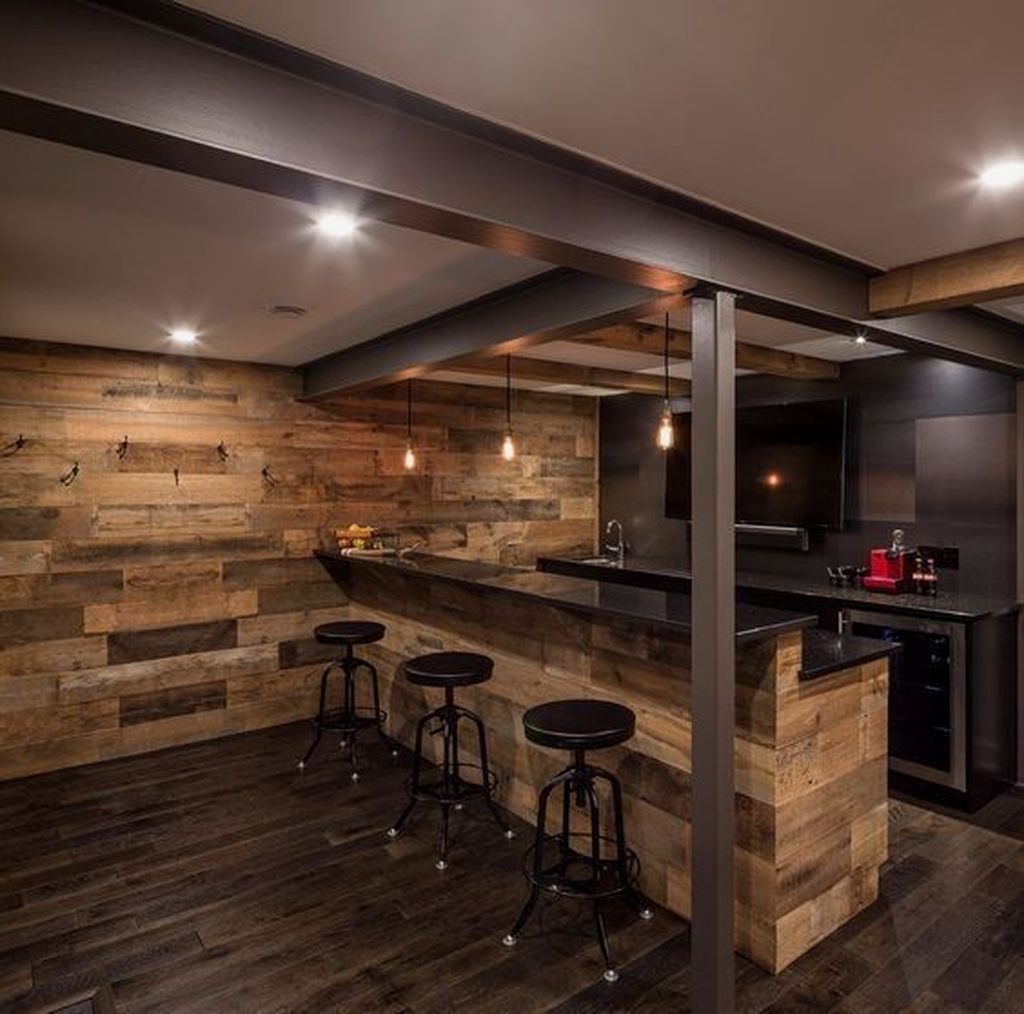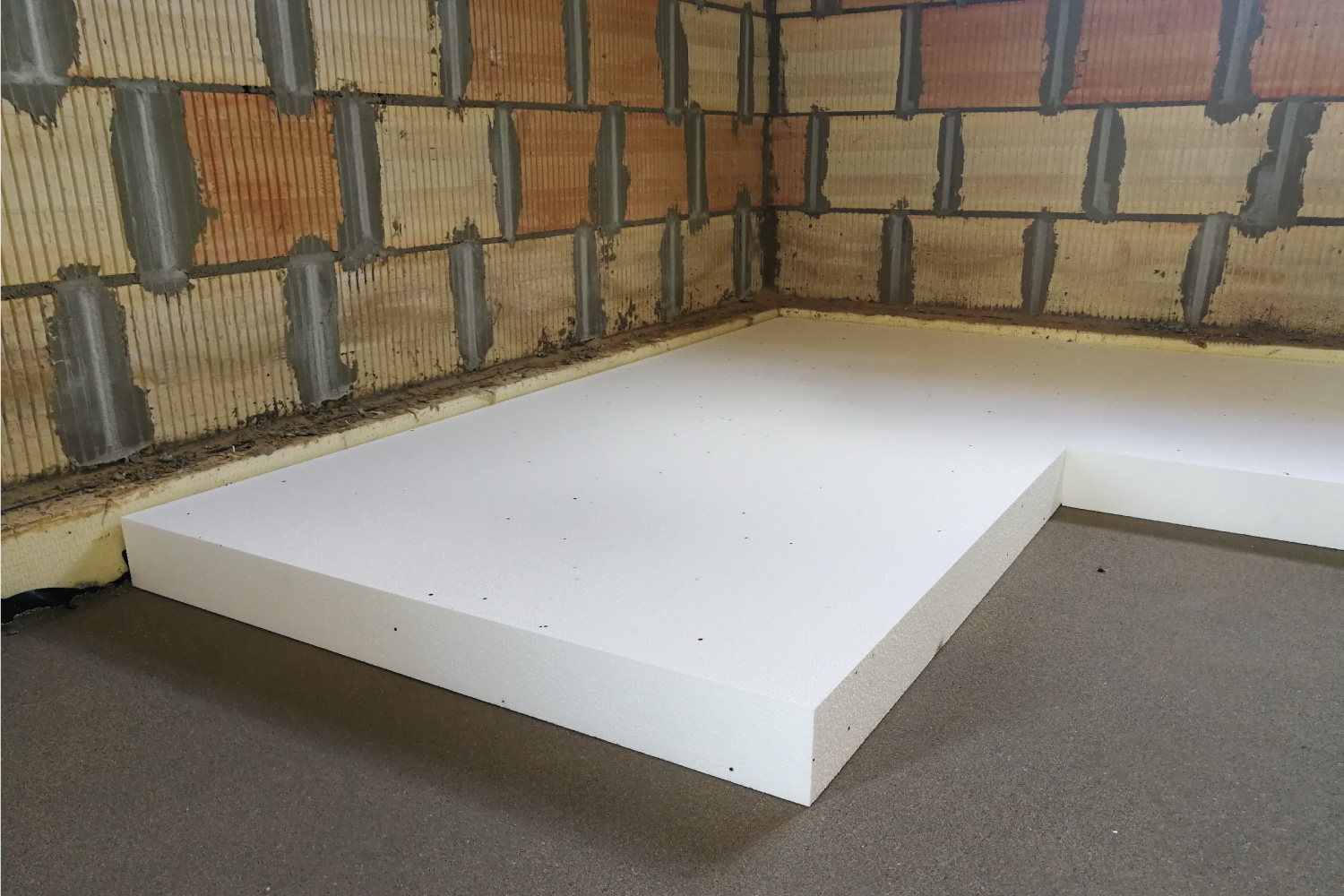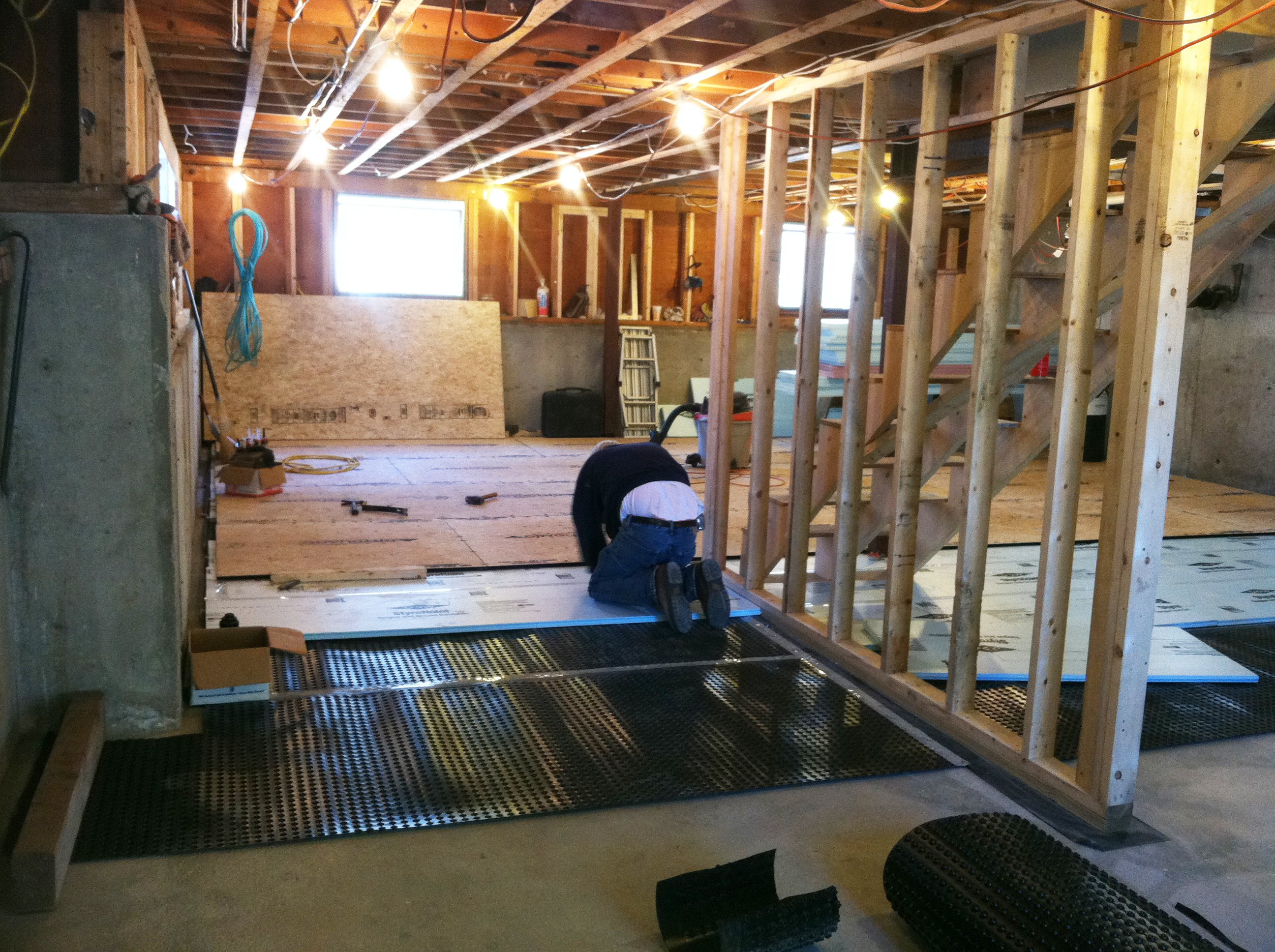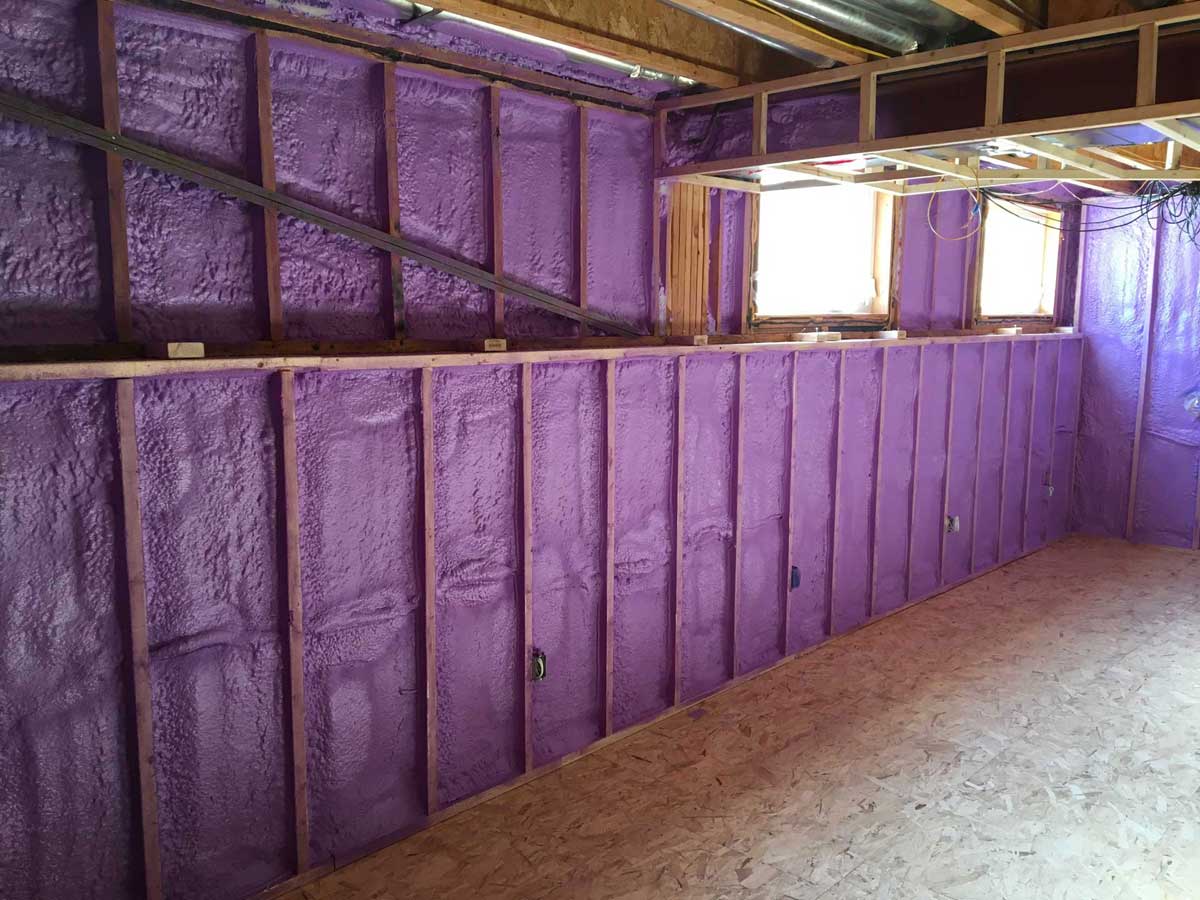Understanding the Importance of Basement Floor Insulation
A well-insulated basement floor is crucial for maintaining a comfortable and energy-efficient home. It serves as a barrier against heat loss, moisture, and cold air infiltration. Understanding the importance of basement floor insulation can help homeowners make informed decisions to improve the overall comfort and energy efficiency of their homes.
- Energy Efficiency: One of the main reasons why basement floor insulation matters is its impact on energy efficiency. Uninsulated floors can lead to significant heat loss, especially in colder climates. By insulating the basement floor, homeowners can prevent heat from escaping through the floor and reduce their heating bills. Insulation acts as a thermal barrier, preventing the transfer of heat between the basement and the rest of the house.
- Moisture Control: Basements are prone to moisture-related issues such as dampness and mold growth. Proper insulation helps in controlling moisture by preventing condensation on the floor surface. Moisture-resistant insulation materials, such as closed-cell spray foam or extruded polystyrene, can create a barrier against moisture infiltration. This not only protects the structural integrity of the basement but also improves indoor air quality.
- Comfort and Noise Reduction: Insulating the basement floor enhances the overall comfort of the living space above. Cold floors can make a basement area feel unwelcoming and uncomfortable. By adding insulation, the floor temperature can be regulated, making the basement a more pleasant living area. Additionally, insulation helps in reducing noise transmission between floors, creating a quieter living environment.
- Structural Protection: Basement floor insulation can also protect the structural elements of the house. In colder climates, when the ground freezes, the soil can expand and put pressure on the foundation. Insulating the basement floor helps to maintain a more consistent temperature, reducing the risk of frost heave and potential damage to the foundation. This can save homeowners from costly repairs in the long run.
- Environmental Impact: Insulating the basement floor is not only beneficial for homeowners but also for the environment. By reducing energy consumption, basement floor insulation helps in reducing greenhouse gas emissions. It promotes sustainable living by minimizing the use of fossil fuels for heating purposes. Additionally, using eco-friendly insulation materials made from recycled or renewable resources further contributes to a greener home.
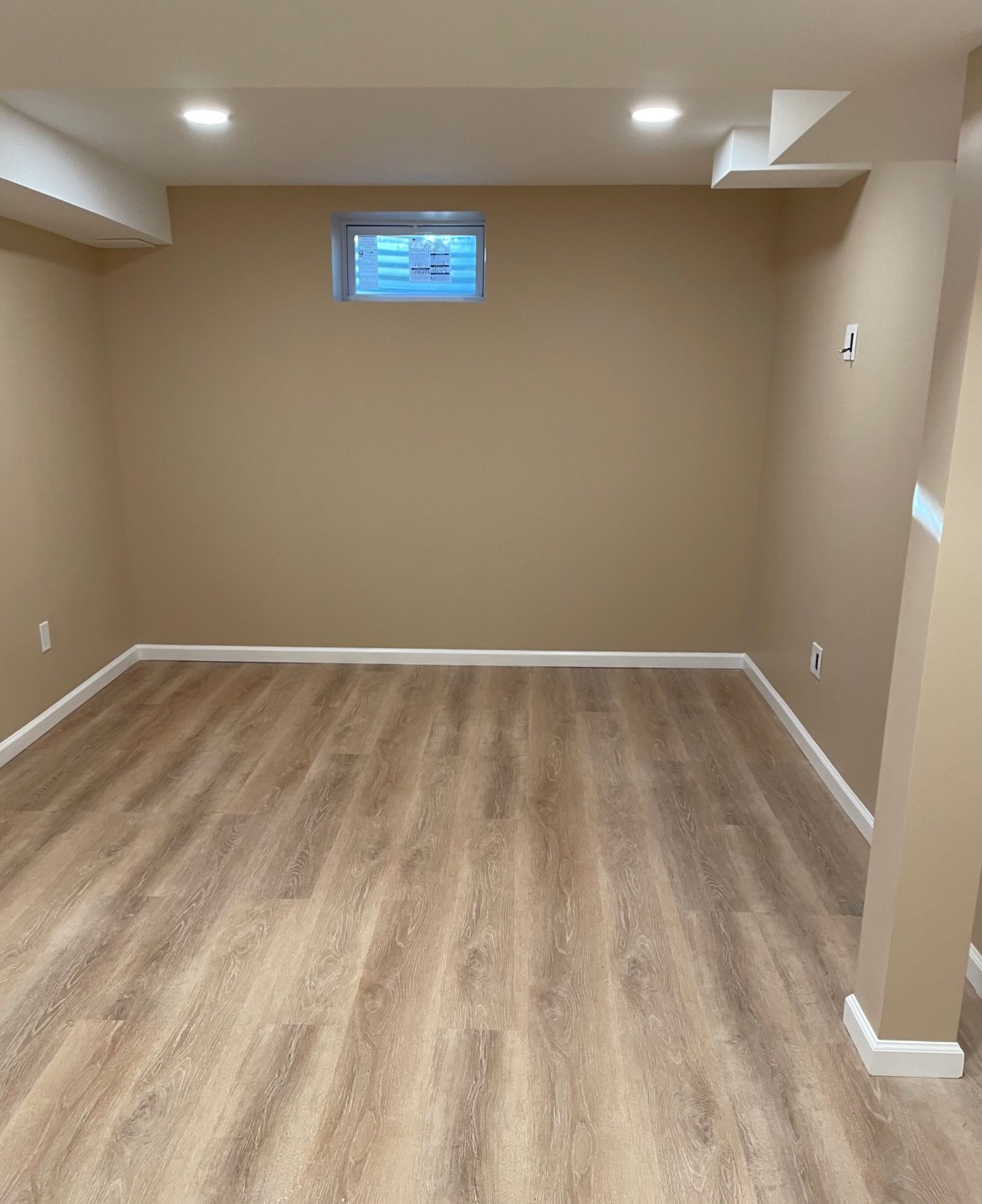
Exploring Different Types of Basement Floor Insulation
When it comes to insulating your basement floor, there are various types of insulation materials to choose from. Each type has its pros and cons, and understanding these differences can help you make an informed decision. Let’s explore different types of basement floor insulation and their advantages and disadvantages.
Fiberglass Insulation: Fiberglass insulation is a commonly used material for basement floor insulation. It is affordable and readily available. Fiberglass batts or rolls can be installed between floor joists, providing thermal resistance and reducing heat loss. Pros of fiberglass insulation include its cost-effectiveness, non-combustible nature, and moisture resistance. However, cons include the potential for air leakage, which can reduce its effectiveness, and the need for proper installation to avoid gaps and compression.
Spray Foam Insulation: Spray foam insulation is another popular option for basement floor insulation. It is applied as a liquid that expands and hardens into a solid foam, creating a seamless and airtight barrier. Pros of spray foam insulation include its excellent thermal performance, ability to fill gaps and cavities, and moisture resistance. It also acts as a vapor barrier, preventing moisture infiltration. However, cons include its higher cost compared to other insulation materials and the need for professional installation due to its specialized application process.
Extruded Polystyrene (XPS) Insulation: Extruded polystyrene, or XPS, is a rigid foam board insulation commonly used for basement floor insulation. It offers high thermal resistance and moisture resistance. Pros of XPS insulation include its durability, resistance to moisture, and high compressive strength, making it suitable for areas prone to moisture exposure. It is also easy to cut and install. However, cons include its higher cost compared to other insulation materials and its potential environmental impact due to its manufacturing process.
Expanded Polystyrene (EPS) Insulation: Expanded polystyrene, or EPS, is another type of rigid foam insulation used for basement floor insulation. It is lightweight and has good thermal resistance. Pros of EPS insulation include its affordability, moisture resistance, and ease of installation. It also provides good insulation performance. However, cons include its lower compressive strength compared to XPS insulation and the potential for moisture absorption if not properly protected.
Insulated Concrete Forms (ICFs): Insulated concrete forms, or ICFs, are a unique type of basement floor insulation that combines insulation and structural support. ICFs consist of foam panels that are used as a formwork for pouring concrete. They provide both thermal insulation and structural integrity. Pros of ICFs include their high thermal resistance, ability to reduce energy consumption, and excellent soundproofing properties. However, cons include the higher initial cost and the need for specialized installation techniques.
How to Properly Insulate Your Basement Floor
Insulating your basement floor is a great way to improve energy efficiency and create a more comfortable living space. While the process may seem daunting, following a step-by-step guide can help you properly insulate your basement floor. Here is a comprehensive guide to help you get started.
Prepare the Basement: Before you begin insulating the floor, it’s important to prepare the basement. Remove any existing flooring materials and clean the surface thoroughly. Repair any cracks or damage in the floor to ensure a smooth and even surface for insulation installation.
Choose the Insulation Material: Select the insulation material that best suits your needs and budget. Consider factors such as R-value, moisture resistance, and ease of installation. Fiberglass batts, spray foam insulation or rigid foam boards are commonly used options for basement floor insulation.
Measure and Cut Insulation: Measure the dimensions of the floor and cut the insulation material to fit the space accurately. Ensure that the insulation fits snugly between the floor joists or around any obstructions such as pipes or ductwork. Use a utility knife or insulation cutting tool to make clean and precise cuts.
Install Vapor Barrier: If you are using insulation materials that do not have built-in vapor barriers, such as fiberglass batts or rigid foam boards, it’s important to install a separate vapor barrier. This helps prevent moisture from migrating into the insulation and causing damage. Use a polyethylene sheet or a vapor barrier specifically designed for basement floors.
Seal Air Leaks: To maximize the effectiveness of basement floor insulation, it’s crucial to seal any air leaks. Use caulk or spray foam insulation to seal gaps, cracks, and openings in the floor, especially around the perimeter and where the floor meets the walls. This helps to create an airtight seal and prevent heat loss.
Install the Insulation: Place the cut insulation material between the floor joists, ensuring a tight fit. Secure the insulation in place using insulation supports or wire hangers. For spray foam insulation, follow the manufacturer’s instructions for proper application. Pay attention to any specific curing or drying times before proceeding with the next steps.
Replace Flooring: Once the insulation is in place and the installation is complete, you can replace the flooring material. Consider using materials that are suitable for basement environments, such as vinyl, tile, or carpet tiles. Ensure that the flooring material allows for proper airflow to prevent moisture buildup.
Regular Maintenance: After insulating your basement floor, it’s important to perform regular maintenance to ensure its long-term effectiveness. Check for any signs of moisture or damage and address them promptly. Monitor the insulation for any signs of deterioration or compression and replace as necessary.
Best Basement Floor Insulation Materials for Different Budgets
Choosing the right basement floor insulation material is crucial for achieving optimal energy efficiency and comfort. However, with various options available, it can be challenging to determine which insulation material is best suited for your budget. Here are some top picks for basement floor insulation materials, categorized based on different budget ranges.
Budget-Friendly Options: If you’re on a tight budget, there are still insulation materials that can provide effective results. Fiberglass batts are a cost-effective option commonly used for basement floor insulation. They offer decent thermal resistance and are widely available. Another budget-friendly option is foam board insulation, such as expanded polystyrene (EPS). EPS insulation is affordable, lightweight, and easy to install.
Mid-Range Options: For those with a moderate budget, spray foam insulation is a popular choice for basement floor insulation. While it may be more expensive than other materials, spray foam insulation offers excellent thermal performance and creates an airtight seal, enhancing energy efficiency. It also provides moisture resistance and helps to reduce noise transmission. Another mid-range option is extruded polystyrene (XPS) insulation, which offers high compressive strength and moisture resistance.
High-End Options: For those with a higher budget, investing in premium insulation materials can provide superior performance. Closed-cell spray foam insulation is a high-end option that offers exceptional thermal insulation, moisture control, and air sealing properties. It provides the highest R-value per inch and creates a seamless and durable barrier. Insulated concrete forms (ICFs) are another high-end option that combines insulation and structural support. While ICFs may require professional installation, they offer excellent thermal resistance and can significantly reduce energy consumption.
Eco-Friendly Options: If environmental sustainability is a priority, there are insulation materials available that are made from recycled or renewable resources. Cellulose insulation is an eco-friendly option made from recycled paper or natural fibers. It offers good thermal performance and is often treated to provide resistance against pests and fire. Another eco-friendly option is natural wool insulation, which is renewable, biodegradable, and has excellent thermal properties. Natural wool insulation is also moisture-resistant and has natural fire-retardant properties.
DIY-Friendly Options: For those who prefer to tackle basement floor insulation as a do-it-yourself project, certain materials are more DIY-friendly. Fiberglass batts are commonly used by homeowners due to their availability and ease of installation. Foam board insulation, such as EPS or XPS, is also DIY-friendly as it can be easily cut to fit the space and requires minimal tools for installation. However, it’s important to follow manufacturer instructions and safety guidelines when working with insulation materials.
Maximizing the Efficiency of Your Basement Floor Insulation
Insulating your basement floor is a valuable investment that can enhance energy efficiency and comfort in your home. To maximize the efficiency of your basement floor insulation, consider the following expert tips and tricks:
Choose the Right Insulation Material: Select an insulation material that suits your specific needs and budget. Consider factors such as thermal resistance (R-value), moisture resistance, and ease of installation. Consulting with a professional or conducting thorough research can help you make an informed decision.
Seal Air Leaks: Before installing insulation, ensure that all air leaks in the basement floor are properly sealed. Use caulk or spray foam insulation to seal gaps, cracks, and openings. This step is crucial to prevent air infiltration and heat loss, maximizing the effectiveness of your insulation.
Install a Vapor Barrier: In some cases, it may be necessary to install a separate vapor barrier to prevent moisture from migrating into the insulation. This is particularly important if you’re using insulation materials that do not have built-in vapor barriers. A polyethylene sheet or a vapor barrier specifically designed for basement floors can help protect the insulation from moisture damage.
Consider Subfloor Insulation: Adding a subfloor to your basement can provide an additional layer of insulation and moisture protection. Subfloor insulation materials, such as rigid foam boards or insulated panels, can help reduce heat loss and create a more comfortable living space. They also provide a cushioning effect and protect flooring materials from moisture damage.
Pay Attention to Floor Coverings: Choose flooring materials that allow for proper airflow and do not impede the performance of the insulation. Avoid impermeable floor finishes, such as vinyl, that can trap moisture and hinder the drying process of the basement floor. Opt for breathable flooring options that are suitable for basement environments.
Consider Radiant Floor Heating: If you’re planning to install a new floor in your basement, consider incorporating radiant floor heating. Radiant floor heating systems can be installed beneath the insulation layer, providing efficient and comfortable heating. This can further enhance the energy efficiency and comfort of your basement.
Regular Maintenance: Inspect your basement floor insulation periodically to ensure it remains in good condition. Look for signs of moisture, damage, or compression and address any issues promptly. Regular maintenance will help preserve the effectiveness of your insulation and prevent potential problems.
How Thick Should Concrete Floor Insulation Be?
Rigid Foam Insulation Installed over Existing Foundation Slabs
Best Practices For Insulating Your Basement With Spray Foam – Eco
Installing Rigid Foam Above a Concrete Slab
Related Posts:
- Basement Floor Color Ideas
- Rubber Flooring For Basement
- How To Clear A Basement Floor Drain
- Basement Floor Covering Ideas
- Acid Wash Basement Floor
- Best Flooring For Concrete Basement Floor
- Insulation Under Basement Floor
- Stone Basement Floor
- Basement Floor Leveling Options
- Basement Flooring Options Inexpensive
